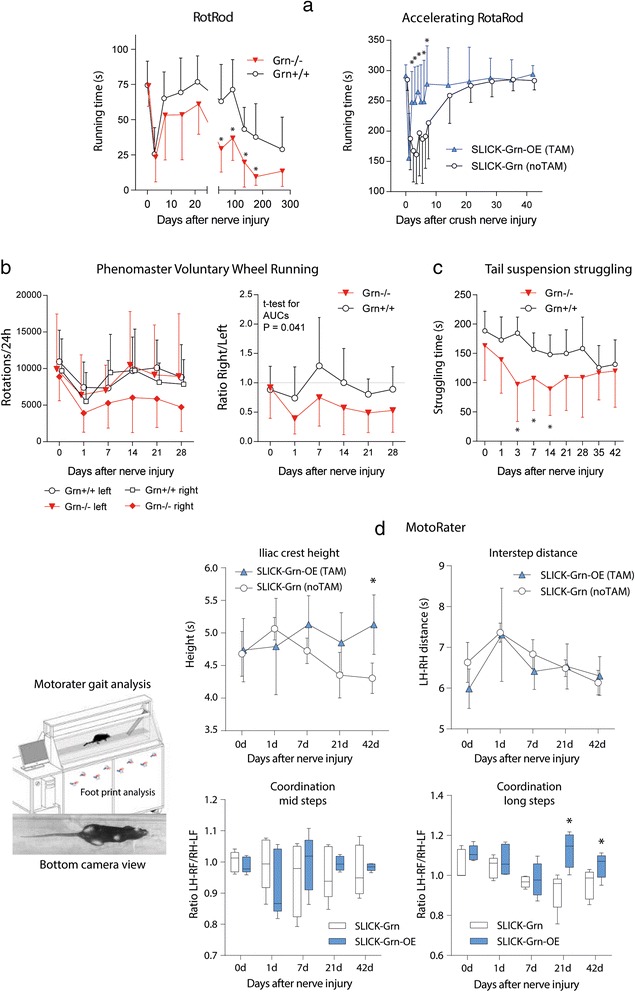Fig. 7.

Motor function analysis before and after sciatic nerve injury in progranulin deficient, control and progranulin-overexpressing mice. Behavioral data are the means ± SD of n = 8–12 mice per group. a Time courses of the running times on a constant speed (Grn−/−) or accelerating RotaRod (SLICK-Grn-OE, with tamoxifen) before and after spared nerve injury or crush nerve injury of the sciatic nerve, respectively. Asterisks show significant differences between genotypes (rm-ANOVA and subsequent t-tests between genotypes, * P < 0.05). b Time course of voluntary wheel running before and after spared injury of the left sciatic nerve in Grn−/− and Grn+/+ mice. Running times briefly dropped after nerve injury but rapidly recovered. After nerve injury, Grn−/− avoided right turns and the right/left ratio significantly differed between genotypes (* P < 0.05; rm-ANOVA and subsequent 2-tailed t-tests between genotypes). c Time course of the struggling times in the tail suspension test (TST) before and after crush injury of the sciatic nerve. Struggling decreased over time in both groups. The decrease was stronger in Grn−/− mice (* P < 0.05; rm-ANOVA, posthoc 2-sided t-tests versus control, Dunnett adjustment of alpha).d MotoRater analysis of locomotion in an over-ground walking task in SLICK-Grn-OE (with tamoxifen) and SLICK-Grn mice (without tamoxifen, control). The upper panel shows the time courses of the iliac crest height and hind paw inter-step distances before and after crush injury of the sciatic nerve (means ± SD). The lower box plots show the time course of coordination represented by the ratios of the diagonals of the ‘left hind to right front’ paw (LH-RF) and vice versa (LF-RH) for the steps of mid lengths (left) and the long steps (right). The line is the median, the box represents the interquartile range, the whiskers show 5 –95 % percentiles ( *P < 0.05; rm-ANOVA, subsequent 2-tailed t-tests between genotypes)
